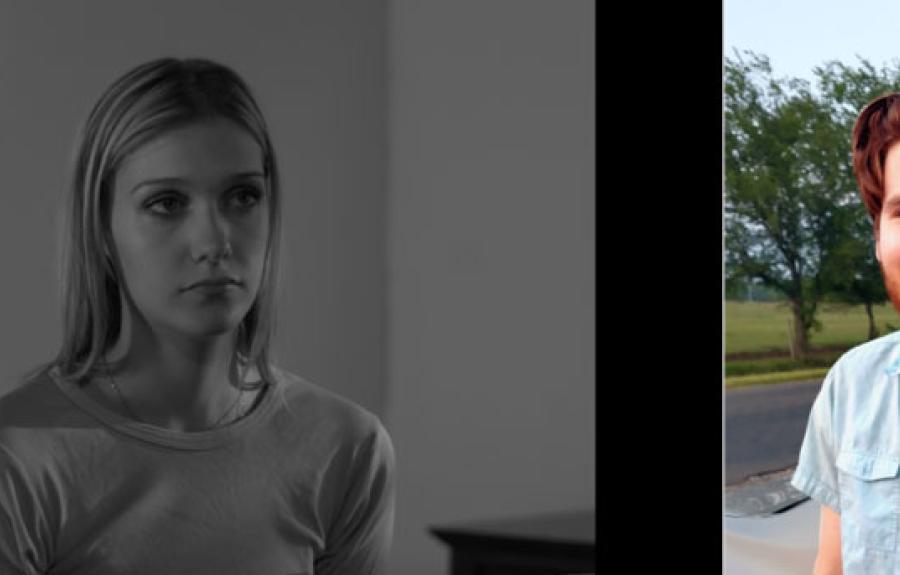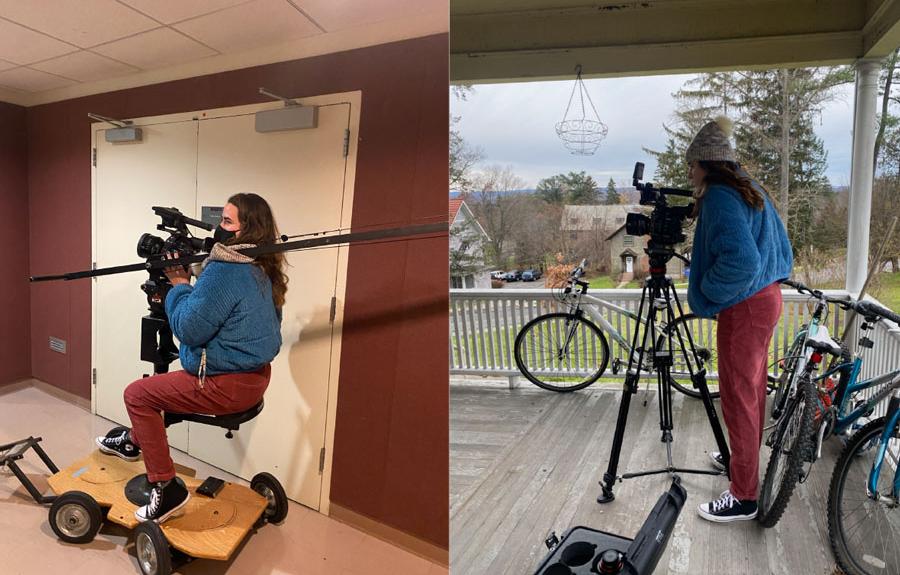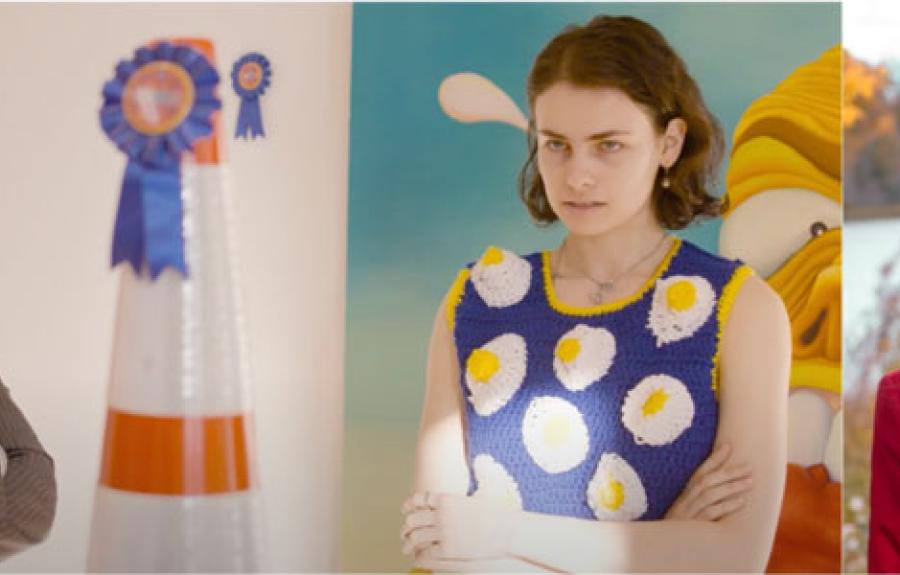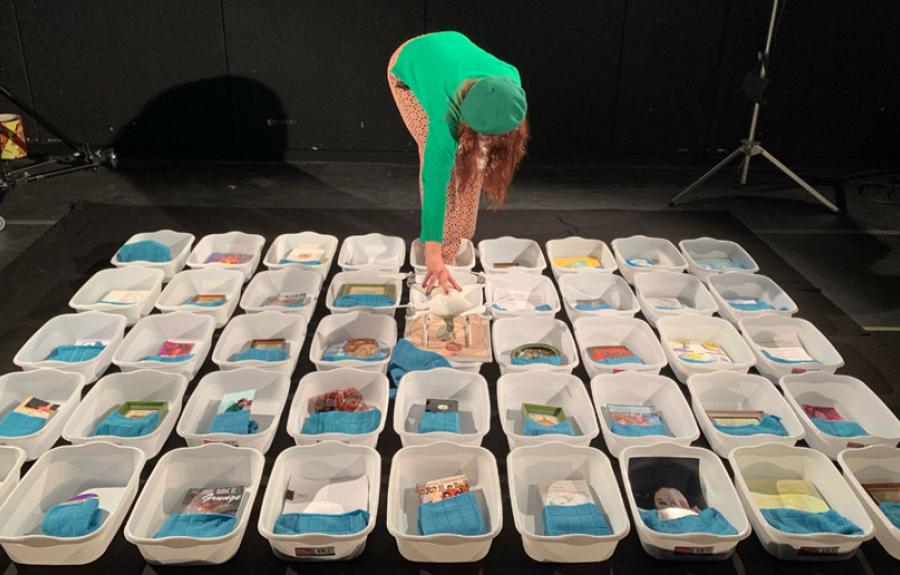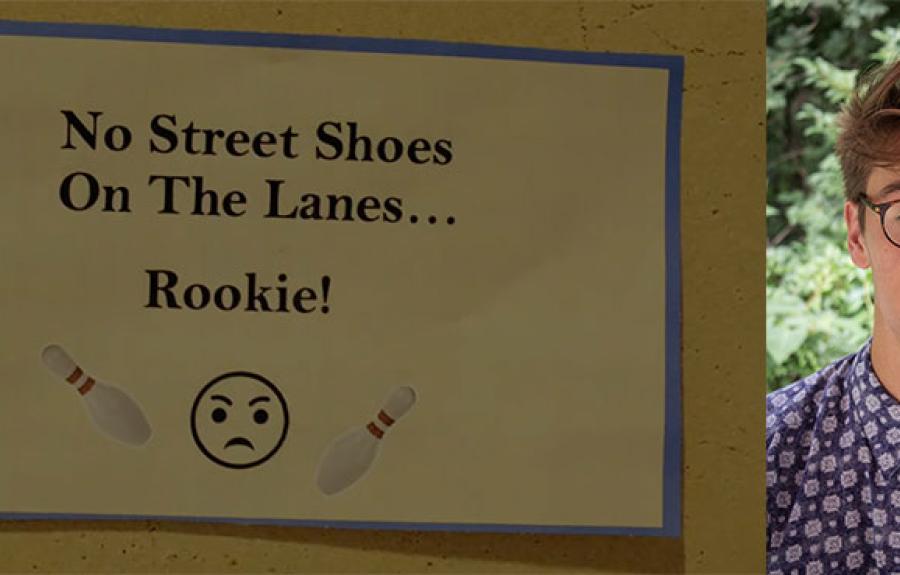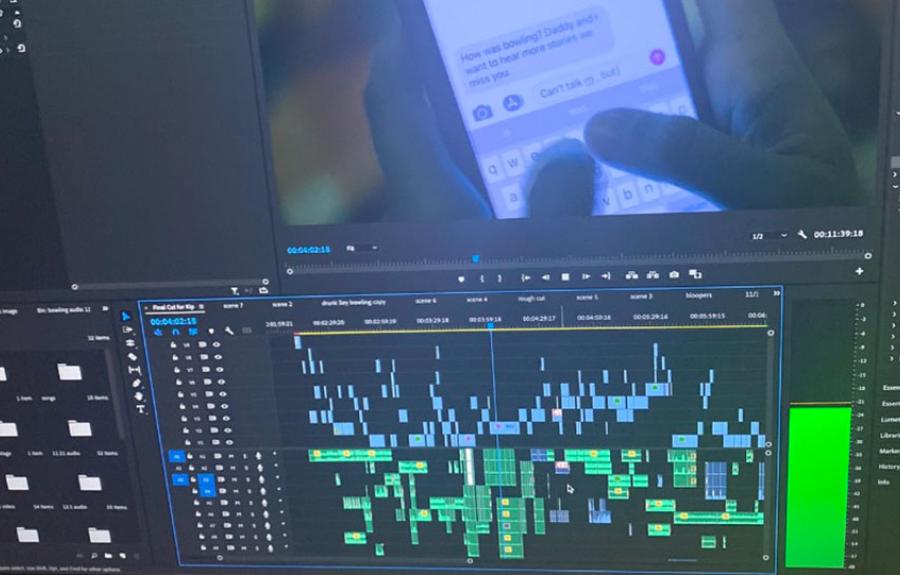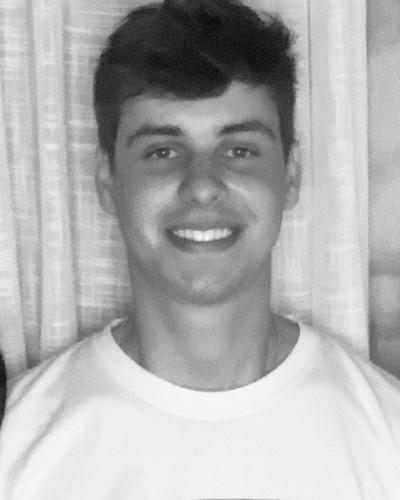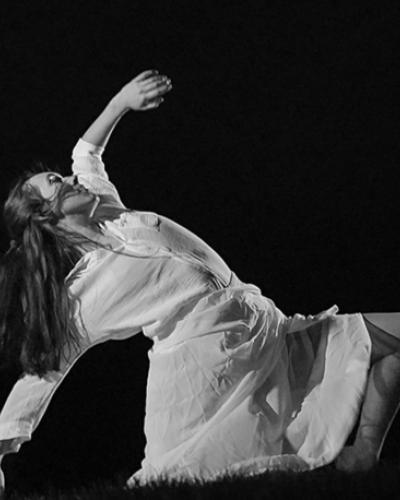A movie used to be just a bunch of rolls of film, and now it’s just a file. A collection of frames that bleed into one another, aided by sound bits that follow. But what does it mean to make a film? To go from nothing to something as small as a file, as regular as a story, as big as a world? Every filmmaker discovers that for themselves.
At PMA, students can learn the basics of filmmaking in PMA 1410 Media Production Laboratory, and make short films in four classes dedicated to introductory and advanced narrative and documentary production, or in a thesis project. In this article, three students from the Fall 2021 iteration of PMA 4585 Film and Video Production II (Film II) share a bit of their journey towards a file, a story, a world.
Public Service Announcement by Noah Alpers
Public Service Announcement watches a 20-something (Phoebe McKinley ’22) fight for agency in her life against a 1950s PSA narrator that acts as her internal monologue. Here, Noah Alpers ’22 (PMA and English major) explores neurological and cultural facets of stress. “After attempting and failing to quell her stress,” he says “Sarah learns she is not isolated in her experience. Therein lies the message of the film that finds root in my life: human connection is one of the best treatments for anxiety.”
The film is stylized as a 1950’s PSA video, with a Mid-Atlantic-accented narrator, black and white footage, film grain, and a 4:3 aspect ratio. While shooting a colorful world to later represent it in black and white may feel unusual, it was even more difficult to pretend like there was voice-over narration when there wasn’t. In the end, to make sure the footage had enough space for the post-production voice, Noah added the voice to the production. “I delivered the lines from behind the cinematographer. While loudly speaking in a goofy accent during takes was a little unnatural at first, it quickly became second nature and even fun.” In post, a clean voice-over was used to replace the lines.
A few images had to use some film magic too. Soup was portrayed by “just spices thrown at random into a pot of water,” and a grapefruit was actually a large orange. The crew had to use similar “sleight of hand” to shoot Sarah driving. Phoebe, the actress, didn’t have a license, so Sydney Reilihan ’22 drove and Phoebe was in the back seat pretending to drive. Careful camera angles made the trick work.
Cinema is a matter of what's in the frame and what's out. – Martin Scorsese. Pictured: Sydney Reilihan ’22, the film’s cinematographer
Check out Noah’s irreverent use of the PSA voice, simulating the anxious protagonist’s internal monologue, in the Public Service Announcement excerpt below:
Picture at an Exhibition by Gillian Harrill
The students’ films, and all artists’ works are their creations – babies, if you will. Gillian Harrill ’22 (Communication major with minors in Anthropology, Film, and Media Studies) makes this metaphor literal in her horror-romance-action comedy Picture at an Exhibition. We open on a woman (Fannie Massarsky ’24) giving birth. Turns out it’s not “a boy or a girl,” but a painting. A very ugly painting. You can’t predict what happens next.
“I had stress dreams in which I made my cinematographer Jeremy Coyle [’21] cry because I ran away into a field screaming during production, but after having those dreams I realized that nothing could be as bad as that,” Gillian shares.
Pre-production involved dealing with a lot of logistics. “I had to buy three baby strollers off of Craigslist in Syracuse and the seller was so confused about how I was using them in a movie. I was emailing everyone from neighborhood developers to grocery store managers.” But everyone was “surprisingly cool” with everything. The grocery store didn’t question the filming of “a meet-cute centered around knocking over asparagus.” And at the Boiceville Cottages, a neighborhood of candy-colored Scandinavian tiny houses that gave even more snap to the unique world of the film, nobody minded the actors running around with baby strollers full of art pieces.
The most expensive shot of the movie: 45 bins of babies from the dollar store and 45 pieces of art, filmed using a drone courtesy of Max Ringer.
Making a film could involve serendipitous encounters and revelations. Gillian met her future composer Baxter Hamilton ’22 at a party. She just talked about the movie, and he just offered to write the score – and he did. The film is named after the 1874 piano suite Pictures at an Exhibition by Russian composer Modest Mussorgsky. For his score, Baxter delivered “this kind of 70’s synth reminiscent of Kubrick’s A Clockwork Orange and a little of Uncut Gems – staying true to the Mussorgsky original while becoming its own thing.”
Unsurprisingly, Gillian calls Picture at an Exhibition her baby, coming from deep within her and getting her unconditional love. With this film, she thinks of her mother (a self-proclaimed non-artist), and of the ways she is similar to her.
Check out the trailer for Gillian’s gem below. If you’d like to view the full film, contact her at gnh23 AT cornell.edu.
Gutter Ball by Max Ringer
Gutter Ball follows the character of Shania Bravo ’23 as she tries to fit into her college’s bowling scene. You can view the full film at the end of the article, so no spoilers here!
“I’m interested in sporting subcultures and the idea of playful settings as landscapes for deeper, more potent dynamics,” shares Max Ringer ’22 (PMA and Hospitality Management major). “How people react to dealing with the anxiety of proving their worth to others is what made me what to direct this film.”
Gutter Ball is very visual, a success in cinematic storytelling. In fact, most of the story can be grasped with no sound. This is due to Max’s video background in music and commercials, as well as a practical constraint of the Helen Newman Bowling Center being a noisy place to record dialogue.
A shoot that lasts multiple hours will often result in only a few minutes in the film. “Most shots for the bowling montages came from just having the leads, Shania and Trence [Wilson-Gillem ’22], bowl along with the Cornell Bowling Club until they got a strike or a shot that looked cool,” says Max. Their acting muscles had to be engaged, as Shania (playing a newcomer) is actually a very good bowler, while Trence (playing a veteran) is new to the game. Max applauds Trence’s ability to exude confidence, roll the ball into the gutter, and show swagger as if he hit a strike (with the camera pointed at him the whole time, another bit of movie magic right there).
Post-production is where countless takes, sound bits and graphics become a film.
Check out Max’s full film below:
Whenever possible, student films are screened to the public at the Schwartz Center’s Kiplinger Theatre, as they were on December 10, 2021. Otherwise, PMA has developed a way to have on-demand web showcases. Here’s to hoping Spring 2022 brings many more good films and opportunities to view them.

